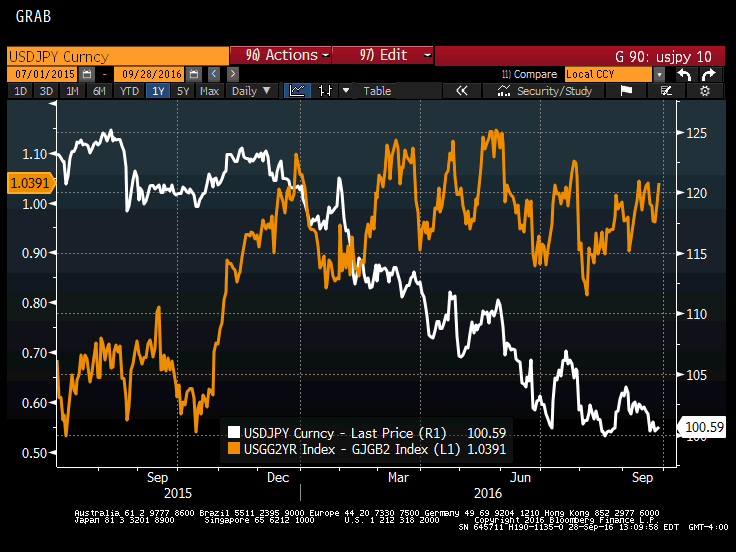By Kathy Lien, Managing Director of FX Strategy for BK Asset Management.
Currencies traded quietly for most of the North American session until OPEC announced that it reached a deal to cut production. This is the first production cut in 8 years and it highlights the frustration that oil-producing nations feel about the 50% drop in crude prices over the past 2 years. With profits being squeezed, the battle for market share can’t go on and this deal ushers in a new period of cooperation between OPEC nations, specifically between Saudi Arabia and Iran. According to OPEC sources, production will be cut by 750k barrels to 32.5 million barrels a day. The cut won’t take place until November and a committee will be set up to determine the level of reduction for each member. Oil prices jumped more than 4.5% in response and the highly correlated Canadian dollar soared as a result. While we wouldn’t be surprised by some back peddling between now and November, this is a historic moment and one that should have a lasting impact on the Canadian dollar. We expect USD/CAD to drop to 1.3000, but see greater losses for GBP/CAD and NZD/CAD.
Meanwhile, the U.S. dollar traded slightly higher against all of the major currencies. Better-than-expected durable goods orders helped keep the greenback supported but at 0%, the stagnation in demand for big-ticket items is hardly encouraging. Instead, Wednesday's focus for U.S. dollar traders was Fed speak as comments were made by Fed Chair Janet Yellen and her Presidents Kashkari, Bullard, Evans and Mester. Yellen did not make a strong case for a rate hike. While she indicated that the FOMC majority sees a rate rise as likely this year, her cautious outlook and tone suggests that she may not be part of the group that is convinced a hike in December is necessary. She’s happy with the decline in the jobless rate but feels that economic growth has been disappointing, productivity growth has been exceptionally slow and most importantly, low inflation gives the Fed “some running room.” If inflation rises, her view may change but right now she isn’t seeing any upside pressure on prices and until inflation increases or job growth accelerates, Yellen would probably prefer to keep monetary policy steady and the current pace of stimulus in pace. Kashikari’s comments were consistent with Yellen’s cautious views as he said the base scenario is for slow and steady economic growth and the economy still has room to run before overheating. Bullard did not discuss monetary policy but Evans expressed similar concern about low inflation. Fed President Mester, who was one of the dissenting votes, explained that raising rates gradually will help prolong the expansion and she warned about risks from delaying the hike. Esther George speaks later this meeting and considering that she also dissented from the vote to leave rates unchanged last month, her comments should be hawkish.
One of the main reasons why USD/JPY continues to hold above 100 are the 3 dissenting votes at the last Fed meeting. It put the central bank much closer to rate hike than before and discourages investors from selling dollars. Let's remember that the Federal Reserve is the only major central bank thinking about raising interest rates. Also, U.S. yields have been on the rise relative to Japanese yields according to the following chart, which suggests that USD/JPY should be trading above 101. Bank of Japan Governor Kuroda was slated to speak Wednesday evening and while BoJ is frustrated by the strength of the yen, its hands are tied. We don’t expect Kuroda to say anything different from the comments he made earlier this week about no plans to make major changes to bond buying.

The euro ended the day unchanged against the greenback after recovering on reports that Deutsche Bank (NYSE:DB) will be rescued by the German government. The government has denied a deal but it is hard to imagine that they would let the country’s biggest lender go under. Mario Draghi also spoke Wednesday and he expressed satisfaction with the current trajectory of the economy. He did not specifically mention that more stimulus will be needed but indicated that they will keep monetary policy easy. Sterling failed to rally against the dollar after Bank of England member Shafik reminded investors that some further easing will be needed at some point. This is consistent with our view that Brexit will return as a major risk for the economy. The Australian dollar was supported by the rise in equities whereas the New Zealand dollar experienced an unexplained decline that drove AUD/NZD to its strongest level in more than a month. No economic reports were released from either country.
